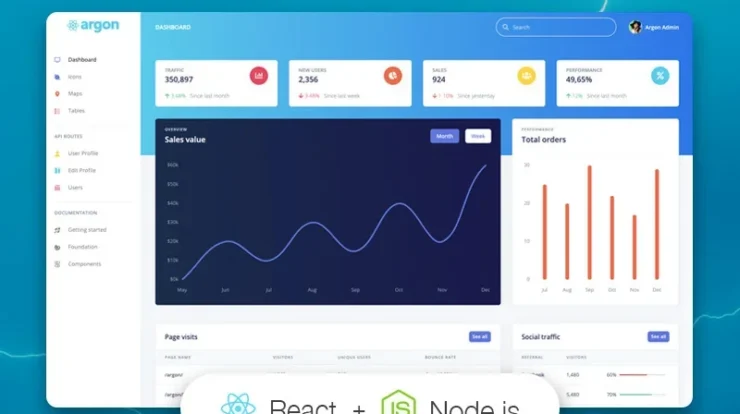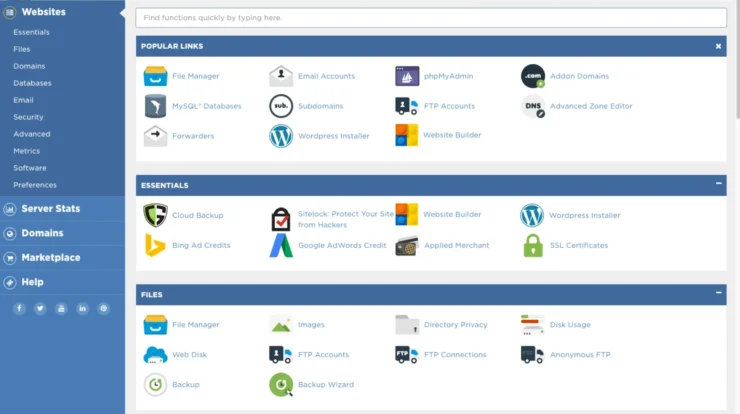
Modern web applications, especially those built with React, demand lightning-fast performance to maintain user engagement and satisfaction.
A significant contributor to this performance is the chosen hosting solution. Selecting the optimal hosting platform for React applications directly impacts loading times, responsiveness, and ultimately, the user experience.
This critical aspect of application development frequently goes overlooked, yet it’s a cornerstone of a successful React application.
From simple single-page applications to complex enterprise-grade portals, the performance of React components heavily relies on the backend infrastructure supporting them.
Choosing the best hosting for React performance is not merely about selecting a provider; it’s about understanding the specific demands of React applications.
Factors like server-side rendering (SSR), API response times, and content delivery network (CDN) integration all play significant roles in shaping the final user experience.
Understanding these technical nuances and identifying the optimal hosting strategy can yield notable improvements in crucial metrics like page load times and overall application responsiveness.
This exploration of the best hosting for React perf will delve into the various options available, comparing their capabilities in terms of scalability, reliability, and cost-effectiveness, ultimately equipping developers with the knowledge to confidently choose the best hosting platform for their React applications.
Choosing the Right Hosting Infrastructure for Optimal React Performance
Choosing the appropriate hosting solution is a critical aspect of achieving top-tier performance in React applications.
Selecting the ideal hosting provider deeply impacts various key performance metrics, including initial load time, responsiveness during user interaction, and the overall user experience.
A robust hosting environment is paramount for supporting React applications, especially as they become more complex and incorporate more features.
A poorly configured hosting platform can significantly degrade the performance of React components, resulting in sluggish responses, increased latency, and a frustrating user experience.
The best hosting for React performance must adeptly manage the demands of both front-end and back-end components, accommodating dynamic content loading and seamless data retrieval.
Understanding the nuances of React application architecture is essential for selecting a hosting platform that optimizes resource allocation and responsiveness.
One crucial factor is server-side rendering (SSR). Hosting solutions that support server-side rendering offer substantial performance gains by pre-rendering React components on the server, thus delivering faster initial page loads.
This pre-rendering reduces the workload on the client-side, leading to a more immediate and engaging user experience.
Another pivotal aspect of choosing the best hosting for React applications is the management of Application Programming Interface (API) response times.
Fast and reliable API responses are vital for React applications as they enable seamless data fetching and updates.
An efficient hosting environment with optimized APIs will minimize delays, allowing for smooth transitions between user interactions and data updates.
A robust content delivery network (CDN) is also essential for ensuring rapid content delivery to users worldwide.
A CDN strategically distributes static assets across multiple servers, minimizing latency and ensuring a consistent experience regardless of the user’s geographical location.
The right hosting setup will also efficiently handle the volume of requests, ensuring that the application is stable and scalable.
A scalable hosting solution is paramount for accommodating increased traffic and demand as the application grows in popularity and complexity.
The correct hosting strategy ensures a positive and seamless user experience for users, no matter the scale or sophistication of the application.
Choosing the Right Hosting Infrastructure for Optimal React Performance
Selecting the ideal hosting provider is fundamental to achieving optimal performance in React applications. Choosing a hosting platform directly influences key performance metrics like initial page load time, responsiveness, and overall user experience. This crucial consideration often goes unnoticed but substantially impacts application success.
A well-structured hosting environment is critical, especially for complex React applications with dynamic content. These applications rely heavily on efficient data retrieval and management from the backend. A poorly chosen hosting platform can drastically reduce the performance of React components, leading to delays, increased latency, and user frustration.
The optimal hosting solution must effectively handle the demands of both front-end and back-end components. This includes accommodating dynamic content loading and seamless data access. Server-side rendering (SSR) capabilities are often crucial for React applications because they enhance initial load times.
Optimizing API response times is vital for a seamless user experience. Faster API responses mean quicker updates and quicker interactions within React applications, which leads to significantly better user engagement. A reliable content delivery network (CDN) is essential for serving static content swiftly and globally.
Scaling the hosting infrastructure is crucial as the React application grows. A flexible and scalable hosting solution is needed to accommodate increased traffic and data demands. This scalability ensures the application maintains speed and responsiveness, even during peak periods.
Choosing the best hosting for React performance goes beyond simply selecting a provider. It necessitates understanding the specific performance requirements of React applications. Careful consideration of factors like server resources, network configurations, and the chosen operating environment is pivotal for successful implementation. This often requires a deeper knowledge of how React applications operate and their potential performance bottlenecks.
Specific requirements, such as the use of specific technologies or frameworks, will influence the best choice for hosting. A tailored solution for specific application needs is critical for achieving the best React performance. This often requires careful consideration of the nature of the data, the scale of the application, and the frequency of updates.
Server-Side Rendering (SSR) for Enhanced React Performance
Server-side rendering (SSR) is a crucial technique for optimizing React applications, significantly impacting perceived load times and initial page rendering.
SSR involves rendering React components on the server, generating a complete HTML page that’s sent to the client.
This contrasts with client-side rendering (CSR), where the browser does the rendering after the initial HTML loads, leading to a noticeable delay until the user interface becomes interactive.
The importance of SSR in React performance stems from its ability to dramatically improve initial load times.
By pre-rendering the application on the server, SSR provides the browser with a fully rendered page, drastically reducing the perceived time to interactive (TTI).
This immediate visual feedback significantly improves user experience, as the initial view of the application feels snappier and more responsive.
Consequently, users are more likely to engage with the application and complete tasks more quickly, leading to higher user satisfaction and potentially improved conversion rates for web applications.
Implementing SSR can be achieved by utilizing frameworks or libraries built for the purpose, enabling the generation of fully rendered HTML on the server.
Popular choices include Next.js, Gatsby, and Remix. These tools abstract away many of the complexities of server-side rendering, making it easier to implement in various project configurations.
While SSR can greatly enhance the initial load time of a React application, its implementation can require more server resources, thus leading to higher hosting costs.
The choice between SSR and CSR should be evaluated based on specific project requirements, factoring in factors such as anticipated traffic volume, the complexity of the application’s components, and available hosting resources.
With SSR, the initial content of the page is already fully rendered, and therefore the client-side performance expectations are reduced; this significantly helps with the overall user experience.
A React application that incorporates SSR can benefit from quicker loading times, improved SEO (Search Engine Optimization), and improved crawlability due to the server-rendered HTML being readily available for indexing.
Choosing the appropriate hosting solution for a React application utilizing SSR will depend largely on the projected user load; a hosting platform suitable for handling high traffic volume and server load will be paramount for optimum performance.
In summary, strategically implementing server-side rendering with appropriate hosting solutions is critical for creating high-performing React applications, enabling users to engage with the interface effectively, and optimizing the performance for better SEO.
Caching Strategies for Optimal React Performance
Effective caching strategies are crucial for optimizing React application performance, significantly reducing load times and improving user experience.
Caching involves storing frequently accessed data, such as static assets, API responses, or pre-rendered components, to be retrieved quickly upon subsequent requests.
Implementing robust caching mechanisms on the hosting platform, whether it’s a content delivery network (CDN) or a custom server setup, is vital for React applications.
CDN caching is particularly advantageous as it strategically places cached copies of static assets closer to users geographically, minimizing latency. This strategy is key for React applications due to the significant amount of static content, like images and JavaScript bundles.
Furthermore, server-side rendering (SSR) can generate HTML components at the server-side, pre-rendering portions of the React application and delivering a partially rendered page to the client. This pre-rendering dramatically boosts initial load time for the React application, improving the user’s initial perceived performance, a critical component for user engagement. This pre-rendering capability is a powerful tool when paired with caching strategies to expedite initial loading.
Caching server-side rendered components helps keep them persistently available, reducing the load on the server. Careful planning of caching strategies for frequently accessed parts of the React application can drastically improve application responsiveness, making it an essential component of a high-performing React setup.
In addition to caching static assets and server-rendered content, caching API responses can be very helpful for React applications. By caching responses from API calls, React applications can minimize latency when repeatedly fetching the same data from the server.
By leveraging these caching strategies, developers can optimize the performance of React applications on various hosting platforms, significantly improving the overall user experience for their website or app.
Choosing the right caching mechanisms, whether through CDNs or server-side configurations, is crucial for maximizing the benefits of caching and ensuring optimal performance for users interacting with the React application.
Optimizing React applications for performance is crucial in today’s fast-paced digital landscape, directly impacting user experience and ultimately, business success.
Choosing the right hosting solution for a React application is not just a technical consideration; it’s a strategic decision that significantly affects load times, responsiveness, and scalability.
This article has explored the multifaceted relationship between React development and hosting, highlighting the pivotal role of factors like server-side rendering (SSR), caching strategies, and server infrastructure in achieving optimal performance.
From lightweight and nimble cloud providers to specialized React hosting platforms, the diverse options available for hosting React applications empower developers to tailor their solutions to specific project needs and user base requirements. Selecting the best hosting for React perf depends on careful evaluation of factors like traffic projections, expected user load, and application complexity.
Ultimately, achieving exceptional React application performance hinges on a well-chosen hosting strategy that supports fast loading speeds, seamless interactions, and a positive user experience. The optimal solution for your specific React application will directly impact how quickly your application renders, how effectively it handles user input, and how consistently your application functions under pressure. Choosing the best hosting for React perf is not merely a performance optimization; it is a critical part of delivering a first-rate user experience.






